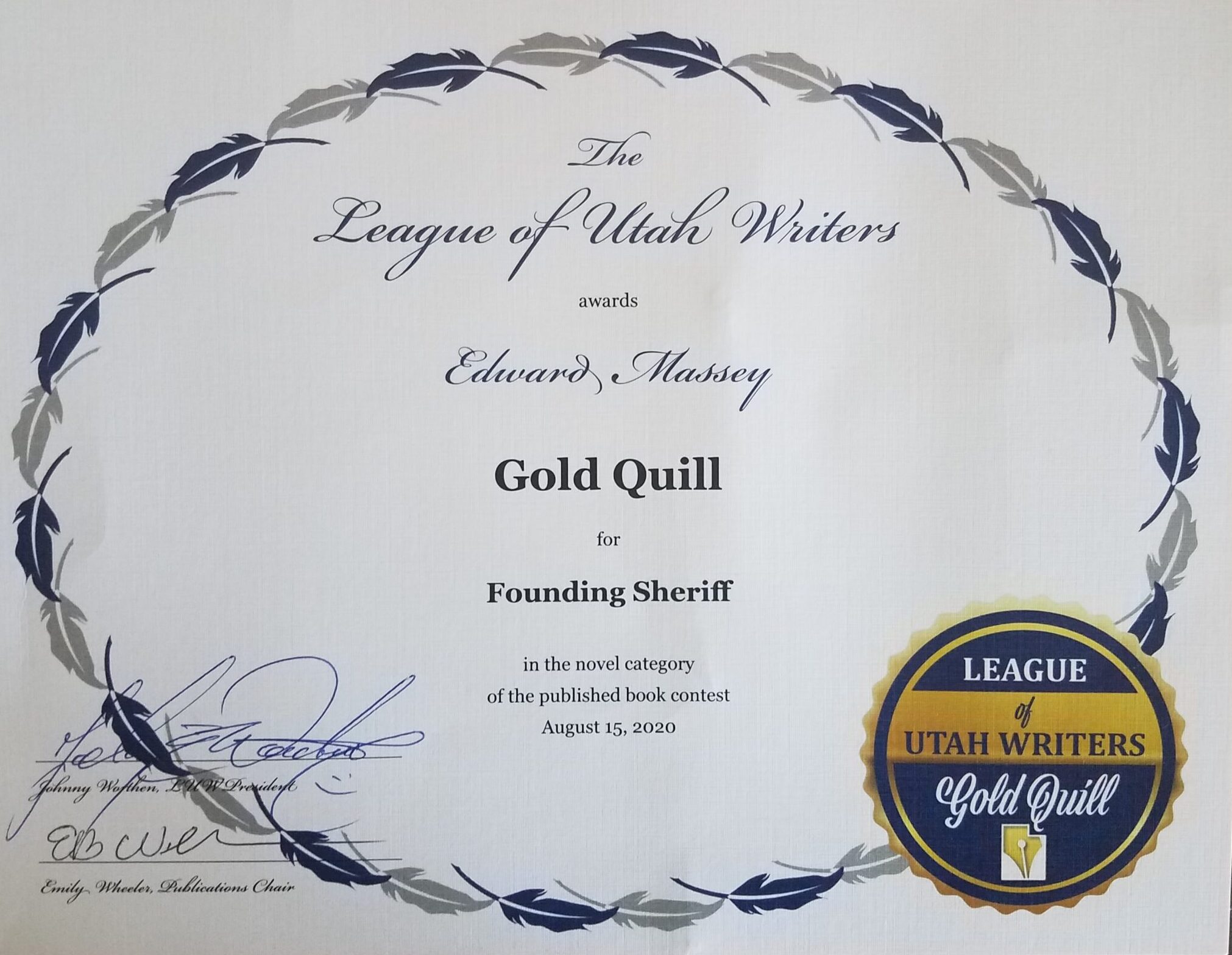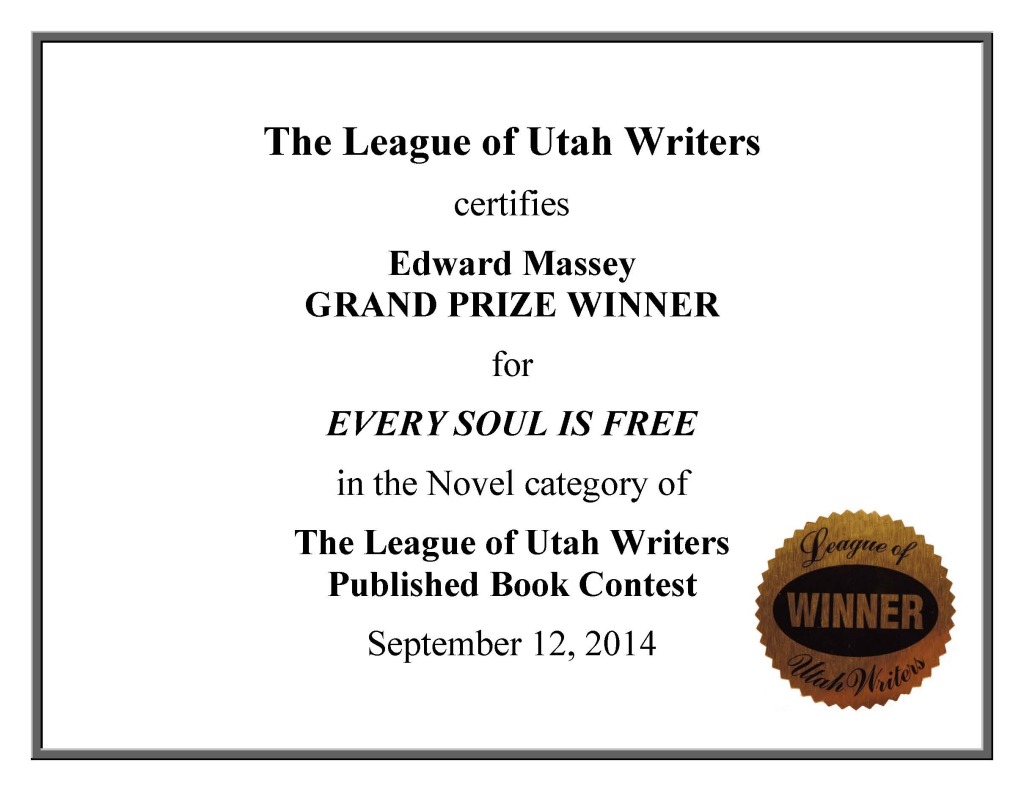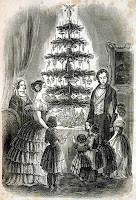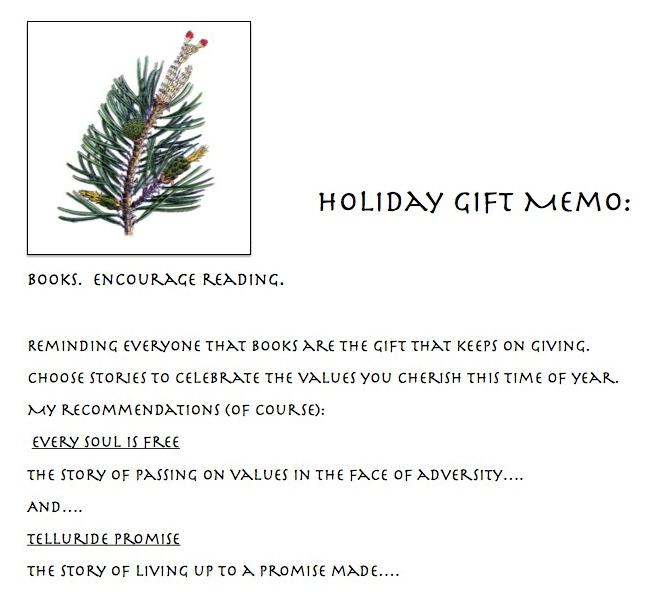My “First Monday of the Month Blog” for Western Fictioneers was published today. Here it is.
I wrote about amnesties and pardons because my sheriff was concerned the governor would use his annual Christmas amnesty to pardon a murderer who faced the firing squad. Fugitive Sheriff lived through four years of Christmas. What was Christmas like in the West in the 1880s?
Whatever it was like, if anyone at the time wrote about it, their words have proved more elusive than my googling skills have retrieved. I found a lot of interesting stuff, including a remarkable number of places and persons named Christmas, but what follows is a triangulation, a guess at what might have and must have been the celebrations of Christmas, using the 1880s as the ending point for traditions by then begun and now taken for granted.
Right off the bat, I discovered a controversy I did not know existed. “’Twas the Night Before Christmas” was believed until 2000 (and until last week by me) to have been written in 1822 by Clement Clarke Moore for his two daughters and later published anonymously in Troy, New York on December 23, 1823. In 2000, Don Foster published a book, Author Unknown: On the Trail of Anonymous, in which he demonstrated that Moore could not have been the author and concluded it must have been written by Major Henry Livingston, Jr.
Already a well established tradition during the 1880s, many people certainly knew or read “Account of a Visit From St. Nicholas” (the poem’s subtitle) to their children in the West. (And now we Western Fictioneers know that for 177 years Clement Clarke Moore took credit for publishing something he didn’t write.)
The history of mince pies
Now on to tastier, though no less spicy, fare. Like most of our Christmas traditions, mince pies came to us from the UK, dating back to Stuart times. They were a status symbol. Having pies meant you were rich. You could afford both meat and the best and most expensive pastry cooks. With their main purpose to show off, they were originally made in various shapes like stars, crescents, hearts, and flowers, the most intricate constructed like jigsaw puzzles to fit together. Some sources report they were filled with meat, such as lamb, rather than the dried fruit mix of today. Both notions are anathema to me.
Our Western forebears never filled a mince pie with lamb when venison was available. For damn sure, mine went out and shot their deer and brought it back for the making of the mincemeat.
And I am certain of that still today. My wife makes mincemeat and she calls up her brother and he goes out and gets a deer and ships the venison to us. Her preference is neck meat, but any will do. Anne and her brother aren’t Westerners, they’re Mainers, of French descent, but I can personally vouch for the authenticity and richness of her mincemeat. So much so, that I share with you her recipe.

Christmas Day
Though eating mince pie was a Christmas Eve tradition, I doubt anyone in the West of our interest asked why Christmas Day was celebrated on December 25.
The first record of Christmas celebrated on December 25th was in 336AD, during the time of the Roman Emperor Constantine (the first Christian Roman Emperor). Bringing his Christian army to conquer the Goths, he discovered a pagan rite at the beginning of Winter and took it for his own. He told the Goths they were celebrating Christmas, thereby conquering the Goths with spirit and spirits. Second only to the English, emigrants to the West were German.
A second tradition starts with the day Mary was told she would have a very special baby (the Annunciation), on March 25th. Nine months after the 25th March is the 25th December! How many Western settlers celebrated the Annunciation showed up on no record I could find.
Finally, among early westerners were a smattering of wandering Jews. Hanukkah, starts on the 25th of Kislev, the month in the Jewish calendar that occurs about the same time as December. Hanukkah celebrates when the Jews were able to re-dedicate and worship in their Temple, in Jerusalem, following many years of not being allowed to practice their religion. There is ample evidence of Temples being dedicated in the West in the 1880s.
Christmas
Not being Catholic, I did not know that the ‘Christ-Mass’ service was the only one that was allowed to take place after sunset (and before sunrise the next day). People had it at midnight!
The Christmas Tree
Northern Europe gets credit for this with documented evidence of the first Christmas tree in Riga, the capital of Latvia, in 1510 and the emergence of Yule logs in Scandinavia soon after. Martin Luther was the first to take the Christmas tree into his home, in the 16th century. The Christmas tree basically came to America via Britain when the drawing of “The Queen’s Christmas tree at Windsor Castle” (set up by Prince Albert, Queen Victoria’s German husband,) was republished in Godey’s Lady’s Book, Philadelphia in December 1850 (without the Queen’s crown and Prince Albert’s moustache to make it look ‘American’!).
Christmas trees were prevalent in our west – and not too difficult (well, except for the work involved) to go out and cut down an evergreen.
Christmas cards
Christmas cards began in Victorian England, as many of Christmas traditions do, in the early 1840s when Sir Henry Cole had the idea for sending his friends a greeting wishing them a Happy Christmas (printed by John Colcott Horsley.)
The idea took off in Europe but lagged in America, until the Civil War was over – and Christmas was declared a holiday in 1870. The transcontinental railroad completed in 1869 made faster mail service possible and the ground breaking printing capabilities of printer Louis Prang transformed the postcard-size European Christmas card to gifts of art sent through the mail.
Prang learned the art of chromolithography, a technology that allowed him to make duplicates of fine art to bring fine art to the masses inexpensively. In 1873 in Vienna he was presented with the idea of making an artful Christmas card. He liked the idea and by Christmas 1874 Prang’s designs started to catch on – not as Christmas cards, but as art. Costing as much as 25 dollars, the Prang holiday designs were sent by many as gifts.
Unique to Prang’s Christmas art was new verse written by well-known poets of the time, such as Henry Wadsworth Longfellow.
During the 1880s Prang’s factories put out more than 5 million Christmas cards a year and were noted for offering stable, suitable employment especially for women, a real rarity of the times. By the 1890s, cheap knock-offs were imported and Prang’s popularity began to diminish, but the Christmas card was established.
Recognition of Christmas Day
Alabama was the first state to grant legal recognition to Christmas in 1836. By 1890 all states and territories had done so, including DC in 1870. Christmas is the only annual religious holiday to receive official religious and secular sanction. The following list of Western states and the year they recognized Christmas is taken from Having a Wonderful Christmas Time Film Guide by Terry Rowan. By end of 1887: California, 1851; Colorado, Nevada, 1861; Oregon, 1862; Idaho, North Dakota, 1863; Montana, 1865; Kansas,1868; New Mexico, 1876; South Dakota, 1877; Texas,1879; Arizona, 1881; Utah, 1882; Wyoming, 1886.
Mormon Tabernacle Choir
Carols were first sung in Europe thousands of years ago — pagan songs, sung at the winter solstice as people danced round stone circles. (The word carol originally meant to dance to something.) So, what did today’s most famous source of Christmas carols do in the 1880s?
Named after the Salt Lake Tabernacle, the Mormon Tabernacle Choir is credited with being founded in 1847, although the Tabernacle was not completed until 1867, the first recorded choir conductor was not appointed until in 1869, and the choir held its first concert at the Tabernacle on July 4, 1873. I could not find any documented Christmas pageants during the 1880s. We all know they existed by the time of the first-ever recording on September 1, 1910. Given the tradition of music and theater, my bet is the Tabernacle Choir was performing, I simply could not find the evidence.
What I found most certainly did not come from the 1880s, but works for me as an ending to this blog. The Christmas story from Luke Chapter 2 told by John Rhys-Davies with the Mormon Tabernacle Choir: http://mymerrychristmas.com/a-masterful-telling-of-luke-2/


E-mail Edward Massey with comments, author of 2014 Gold Quill winner, Every Soul Is Free and Amazon ABNA 2009 Quarter-finalist, Telluride Promise.
















